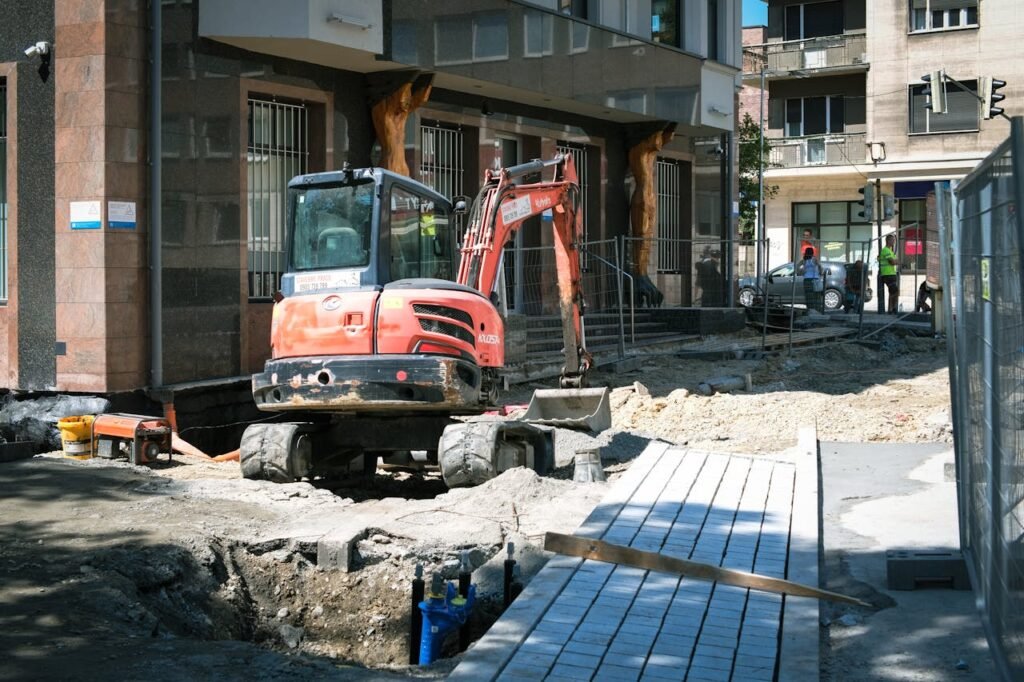Sidewalk repairs are essential for maintaining safe pedestrian pathways and ensuring compliance with city regulations. Whether addressing minor cracks or complete replacements, homeowners and business owners must understand the costs involved, permit requirements, and how to avoid fines or violations. With evolving standards in 2025, proper planning and adherence to municipal guidelines ensure a smooth and cost-effective repair process.
Understanding Sidewalk Repair Costs
The cost of sidewalk repair near me varies depending on the extent of the damage, material choices, and labor expenses. Minor crack repairs using patching compounds or sealants typically range from $250 to $750 per section. Resurfacing worn-out concrete to restore structural integrity costs between $1,000 and $3,000 for standard-sized sidewalks.
Full sidewalk replacement becomes necessary when damage is severe or structural stability is compromised. In 2025, replacing a sidewalk section costs approximately $50 to $100 per square foot, depending on location, concrete quality, and accessibility. Additional fees apply for excavation, disposal of old materials, and decorative finishes.

Image source : pexels
Labor charges fluctuate based on contractor expertise, job complexity, and city-mandated repair standards. Hiring licensed professionals ensures compliance with safety regulations while minimizing future maintenance expenses. Some municipalities provide cost-sharing programs or partial reimbursements for sidewalk improvements, reducing homeowner expenses.
Navigating Permit Requirements for Sidewalk Repairs
Before initiating repairs, homeowners must verify permit requirements with their local city department. Municipal codes often mandate permits for extensive sidewalk restoration, ensuring work complies with zoning laws and safety standards.
Permit costs range from $100 to $500, depending on location and project scope. Applications typically require details such as proposed repair methods, contractor credentials, and projected completion timelines. City inspectors may review the sidewalk’s condition before granting approval, ensuring repairs align with current accessibility and drainage requirements.
Some areas impose stricter regulations on sidewalks near intersections, schools, or commercial districts, necessitating additional permits. Failure to obtain proper authorization can result in fines or forced removal of unauthorized repairs. Consulting city planners or permit offices ensures homeowners meet all compliance obligations before beginning work.
Avoiding City Violations and Fines
Cities enforce strict sidewalk maintenance regulations to prevent hazards such as uneven surfaces, water pooling, and deteriorating pavement. Property owners must routinely inspect sidewalks for cracks, raised edges, or drainage issues to avoid citations.
One common violation involves failure to address trip hazards caused by root intrusion or shifting pavement. Regular trimming of tree roots and applying leveling techniques prevent costly fines. Installing slip-resistant coatings improves surface safety, reducing liability risks.
Drainage compliance remains a priority in urban sidewalk maintenance. Poorly graded sidewalks lead to water accumulation, increasing deterioration risks. Ensuring proper slope angles and installing drainage channels mitigate excessive wear and minimize erosion-related penalties.
Cities often issue warnings before enforcing fines, providing property owners a grace period for corrections. Ignoring these notices can result in financial penalties or forced municipal repairs, significantly increasing costs. Proactive maintenance and timely repairs prevent legal disputes and ensure a safe walkway for pedestrians.
Final Thoughts
Sidewalk repairs in 2025 require careful budgeting, permit awareness, and adherence to city regulations. Understanding cost factors, obtaining proper authorization, and proactively addressing structural issues prevent unnecessary expenses and fines. Whether managing minor fixes or complete replacements, maintaining sidewalks ensures compliance while enhancing safety and property aesthetics. By following municipal guidelines and hiring reputable contractors, homeowners and business owners achieve durable and regulation-approved repairs that enhance neighborhood infrastructure. For expert construction and renovation services tailored to your needs.
